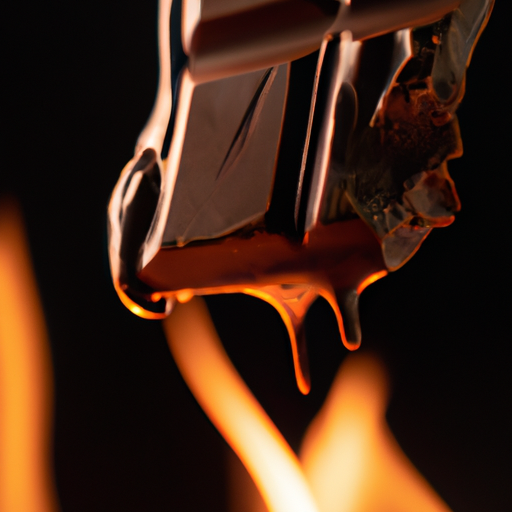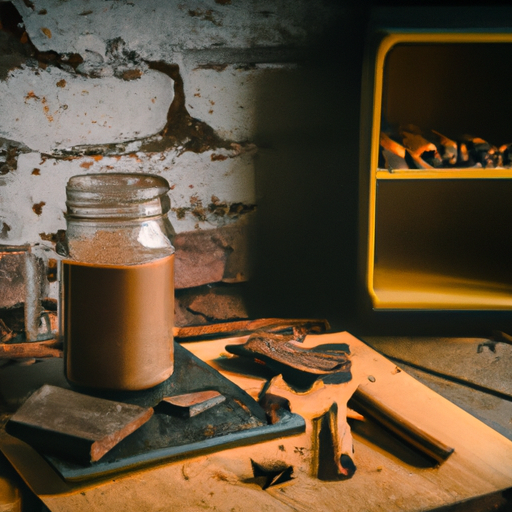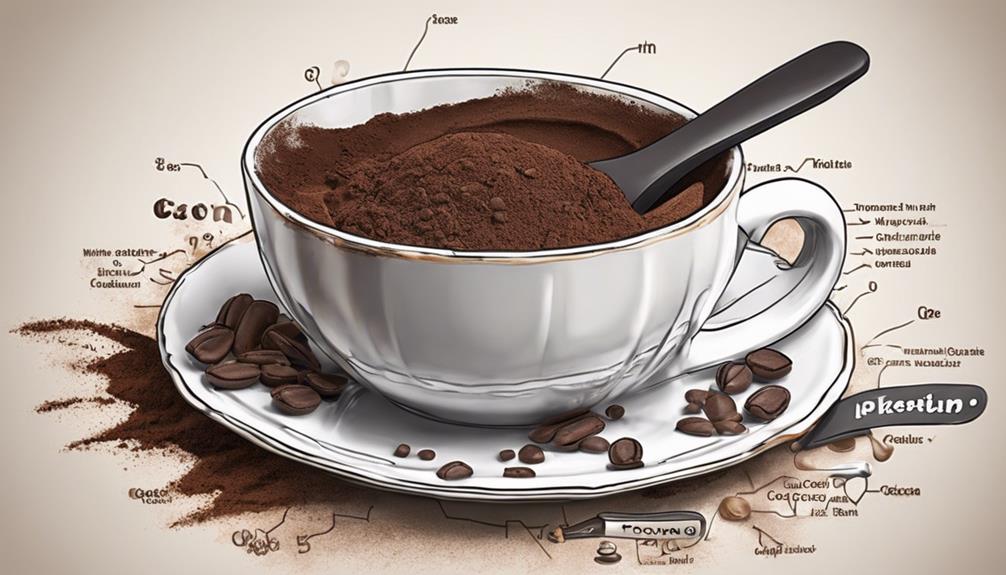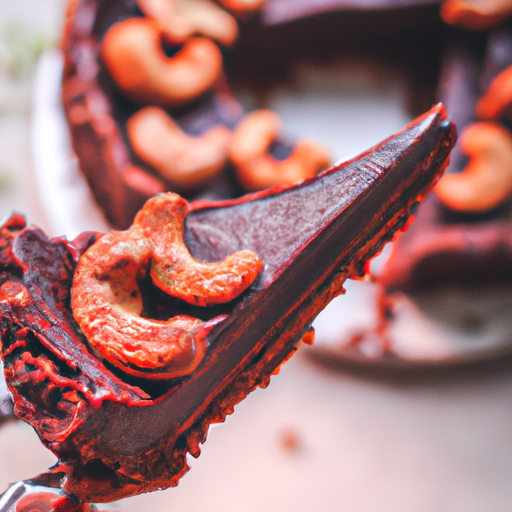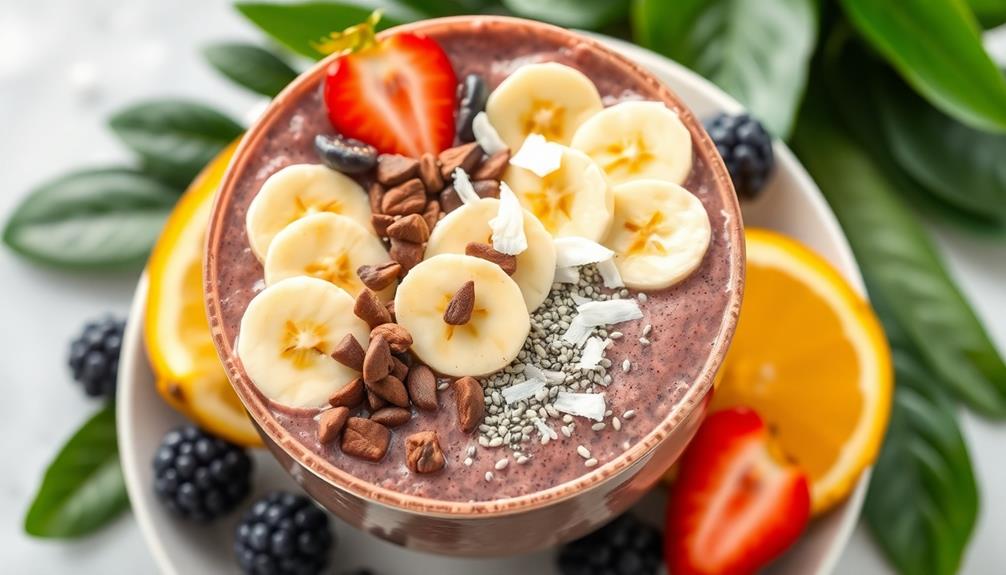Oh, the marvels of raw cacao! Its luxurious and indulgent taste, its enticing fragrance, and its supposed health advantages have captivated the interest of health aficionados and culinary experts alike.
But here’s the burning question: does raw cacao lose its power when heated? As a lover of all things chocolate, I couldn’t help but delve into the scientific realm to uncover the truth behind this tantalizing mystery.
In this article, we will explore the nutritional composition of raw cacao, the effects of heat on its nutrient content, the role of temperature in retaining its power, and the importance of processing techniques.
We will also discuss the health benefits of raw cacao, its culinary applications, and gather expert opinions on the matter.
So grab a mug of hot cocoa (or should I say, raw cacao?), sit back, and let’s uncover the secrets of this delectable delight.
Key Takeaways
- High temperatures reduce antioxidants and flavonoids in raw cacao.
- Roasting cacao beans decreases antioxidant levels.
- Excessive heat destroys enzymes responsible for health benefits in raw cacao.
- Raw cacao retains beneficial properties even when heated.
Understanding the Nutritional Composition of Raw Cacao
Raw cacao is packed with nutrients that may be diminished when it’s heated. The nutritional value of raw cacao lies in its high content of antioxidants, flavonoids, and minerals such as magnesium and iron. These components are essential for maintaining good health and promoting various bodily functions.
However, the processing techniques used to heat cacao can affect its nutritional composition. Heat exposure during processing can lead to the breakdown of delicate compounds, such as antioxidants, resulting in a loss of their potency. Additionally, prolonged or excessive heating can also cause the degradation of vitamins and minerals present in raw cacao.
Therefore, it’s important to consider the effects of heat on the nutrient content of cacao when exploring its potential health benefits. Transitioning to the subsequent section, understanding how heat impacts the nutrient content is crucial for determining the optimal processing methods for preserving cacao’s nutritional power.
The Effects of Heat on Nutrient Content
When heated, the nutrient content of cacao may be compromised, like a delicate flower wilting under the scorching sun. The effects of cooking on nutrient absorption in cacao are significant.
Firstly, heat can degrade certain vitamins and minerals present in cacao, reducing their bioavailability and overall nutritional value.
Secondly, the impact of heat on antioxidant levels in cacao is noteworthy. Antioxidants, such as flavonoids and polyphenols, are known for their health benefits, including protecting against oxidative stress and inflammation. However, prolonged exposure to high temperatures can lead to the degradation of these antioxidants, diminishing their potential health-promoting effects.
Therefore, it is important to consider the role of temperature in retaining cacao’s power. Transitioning into the subsequent section, understanding how different cooking methods affect cacao’s nutrient retention is crucial.
The Role of Temperature in Retaining Cacao’s Power
As temperatures rise, the potency of cacao diminishes, like a wilting flower under the scorching sun. The role of roasting in cacao processing is crucial, as it not only enhances the flavor but also affects its power.
Heat during roasting causes chemical reactions that change the composition of cacao beans, leading to the development of complex flavors. However, excessive heat can also lead to the loss of some beneficial compounds present in raw cacao. Studies have shown that high temperatures can degrade certain antioxidants and flavonoids, reducing the overall nutritional value of cacao.
Therefore, it is important to carefully control the roasting process to preserve the health benefits of cacao while achieving the desired flavor profile.
Moving on to the subsequent section about the importance of processing techniques, we delve into the various steps involved in preserving the power of cacao.
The Importance of Processing Techniques
The art of cacao processing holds the key to unlocking its true potential, as each step carefully intertwines flavors and preserves its intrinsic power. Processing techniques play a crucial role in determining the nutritional value of raw cacao. The way cacao beans are harvested, fermented, roasted, and ground can significantly impact its final composition. For example, high temperatures during roasting can cause a loss of certain nutrients and antioxidants. However, the duration and temperature of roasting can also enhance the flavor profile of cacao. Finding the right balance between preserving its nutritional content and developing its unique taste is a delicate process. By understanding the science behind different processing techniques, we can harness the full power of raw cacao while still enjoying its delicious benefits. Transitioning into the next section, the health benefits of raw cacao are closely linked to its careful processing.
Health Benefits of Raw Cacao
Indulge in the rich and flavorful world of raw cacao, where its health benefits await you with every bite.
Raw cacao is a powerhouse of antioxidants, which are essential for neutralizing harmful free radicals in the body. These antioxidants, such as flavonoids and polyphenols, have been shown to have various health benefits. They can reduce inflammation, improve heart health, and boost the immune system.
Additionally, raw cacao contains compounds that can positively impact mood. It increases the production of endorphins and serotonin, which are neurotransmitters responsible for feelings of happiness and well-being.
So, not only does raw cacao provide a delightful and indulgent taste experience, but it also offers a multitude of health benefits.
Transitioning into the subsequent section about culinary applications of raw cacao, it’s time to explore how this versatile ingredient can be utilized in various recipes to elevate your culinary creations.
Culinary Applications of Raw Cacao
When it comes to culinary applications, raw cacao can be a versatile ingredient in baking and cooking. Its rich, intense flavor can enhance desserts like brownies, cakes, and cookies, adding a deep chocolatey taste.
Raw cacao can also be incorporated into savory dishes like chili or mole sauce, providing a unique twist to traditional recipes.
Furthermore, raw cacao can be used to create delicious and nutritious beverages such as hot chocolate or smoothies, offering a satisfying and indulgent experience.
Raw Cacao in Baking and Cooking
Mixing raw cacao into your favorite recipes is like adding a pinch of magic to your culinary creations. The unique flavor and health benefits of raw cacao make it a versatile ingredient in both baking and cooking. When used in baking, raw cacao can enhance the richness and depth of chocolate flavor in cakes, cookies, and brownies. It can also be used as a substitute for cocoa powder in recipes, adding a more intense and complex taste. In cooking, raw cacao can be incorporated into savory dishes, such as chili or mole sauce, to provide a hint of bitterness and earthiness. To help you understand the different ways to incorporate raw cacao into your recipes, here is a table showcasing various baking techniques and cooking methods that can be used with raw cacao:
| Baking Techniques | Cooking Methods |
|---|---|
| Chocolate ganache | Mole sauce |
| Chocolate chips | Chili |
| Chocolate drizzle | Braising |
| Chocolate frosting | Marinating |
By exploring these techniques and methods, you can unlock the full potential of raw cacao in your culinary adventures. In the next section, we will delve into the exciting world of incorporating raw cacao into beverages.
Incorporating Raw Cacao into Beverages
Enhance your beverage experience by infusing raw cacao into your favorite drinks, unlocking a world of rich and indulgent flavors. Incorporating raw cacao into hot beverages allows you to enjoy its unique taste and reap the potential health benefits it offers.
Try adding raw cacao powder to your morning coffee or tea for a delicious twist. Cold brew recipes with raw cacao can provide a refreshing and energizing alternative to traditional iced drinks.
Indulge in a creamy and decadent hot chocolate made with raw cacao.
Create a velvety smooth and nutrient-packed chocolate smoothie by blending raw cacao with fruits and vegetables.
Enjoy a homemade mocha by combining raw cacao with freshly brewed espresso.
Add a sprinkle of raw cacao nibs to your favorite herbal tea for a subtle hint of chocolate.
Experiment with a raw cacao-infused matcha latte to elevate your usual green tea experience.
By incorporating raw cacao into your beverages, you can explore a wide range of flavors while potentially benefiting from its antioxidant properties.
Transitioning to the subsequent section, let’s delve into expert opinions on heating raw cacao.
Expert Opinions on Heating Raw Cacao
Experts have expressed concerns about heating raw cacao due to the potential loss of its potency and beneficial compounds. Scientific studies have shown that high temperatures can result in the reduction of antioxidants and flavonoids in cacao. The specific heating technique used can also impact the nutritional value of raw cacao. For instance, roasting cacao beans at high temperatures for an extended period can significantly decrease the levels of antioxidants. Moreover, excessive heat can destroy the enzymes responsible for the health benefits of cacao. Therefore, when incorporating cacao into beverages, it is important to consider the heating method. In the subsequent section, we will explore alternative ways to enjoy raw cacao without subjecting it to excessive heat, in order to maximize its nutritional benefits.
Tips for Maximizing the Nutritional Benefits of Cacao
To fully unlock the rich nutritional benefits of cacao, there are simple yet effective strategies that can be employed. Here are three key tips for maximizing cacao’s nutritional benefits:
-
Choose raw, unprocessed cacao: Opt for raw cacao instead of processed cocoa powder, as processing can reduce the levels of beneficial compounds like antioxidants and flavonoids.
-
Avoid high temperatures: Heat can degrade the nutritional properties of cacao. When using cacao in recipes, it is best to keep the temperature below 115°F (46°C) to preserve its beneficial components.
-
Combine with healthy fats: Cacao’s absorption of nutrients is enhanced when consumed with healthy fats like avocado or coconut oil. These fats also provide additional health benefits and promote satiety.
Maximizing cacao’s nutritional benefits is crucial for its impact on overall health. By following these strategies, you can ensure that you are getting the most out of this superfood.
Transitioning into the subsequent section about ‘conclusion: making informed choices with raw cacao’, it is important to understand the importance of informed decision-making when it comes to incorporating cacao into your diet.
Conclusion: Making Informed Choices with Raw Cacao
Make sure you fully understand the importance of informed decision-making when it comes to incorporating raw cacao into your diet, as it can significantly impact the overall nutritional benefits you receive.
Making informed decisions means understanding the nutritional value of raw cacao and how it can be affected by various factors, such as heating. While heating raw cacao does alter its chemical composition and may reduce some of its nutritional power, it still retains many beneficial properties.
Research suggests that even when heated, raw cacao can still provide antioxidants, flavonoids, and minerals. However, to maximize the nutritional benefits of raw cacao, it is recommended to consume it in its raw, unheated form. This ensures that you are getting the most out of its natural goodness and preserving its nutritional value.
Informed choices are key to optimizing the benefits of raw cacao in your diet.
Frequently Asked Questions
Can I still get the health benefits of raw cacao if I use it in baking or cooking?
Yes, you can still receive the health benefits of raw cacao when using it in baking or cooking. Various cooking methods may slightly alter its nutritional content, but it retains many beneficial compounds.
What temperature is considered too high for heating raw cacao?
The ideal temperature for heating raw cacao without diminishing its health benefits is below 118°F (48°C). Roasting raw cacao at higher temperatures can lead to the loss of its powerful antioxidants and nutrients.
Are there any specific processing techniques that can help retain the power of raw cacao when heated?
There are specific processing techniques that can help retain the power of raw cacao when heated. By carefully controlling the temperature and duration of heating, as well as using gentle processing methods, the beneficial compounds in raw cacao can be preserved.
Are the nutritional benefits of raw cacao lost completely when heated or is there still some retained?
Cooking with raw cacao can still retain some nutritional benefits. For example, a study found that even after being heated, the antioxidant activity of raw cacao remained high, suggesting that it retains its power to some extent.
Can I still enjoy the taste of raw cacao even if it loses some of its nutritional power when heated?
Yes, I can still enjoy the taste of cooked cacao dishes. However, if I’m looking for alternatives with similar nutritional power, I can consider other superfoods like dark chocolate or matcha.
Does Heating Organic Raw Cacao Powder Affect Its Caffine Content?
Yes, heating organic raw cacao powder can affect its caffeine content. High temperatures can cause the breakdown of caffeine molecules, leading to a decrease in the overall caffeine content of the cacao powder. It is best to consume organic raw cacao powder at lower temperatures to preserve its caffeine content.
Conclusion
In conclusion, it is evident that heating does impact the nutritional composition of raw cacao. Studies have shown that the antioxidant content of raw cacao decreases significantly when heated at high temperatures. This highlights the importance of processing techniques and temperature control in retaining the power of cacao.
To maximize the nutritional benefits of cacao, it is recommended to consume it in its raw form or opt for low-temperature processing methods. By making informed choices, we can fully harness the health benefits that raw cacao has to offer.

